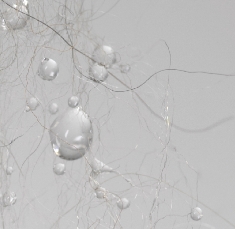 |
 |
 |
||
WOOL
WOOL
Wool is the ultimate natural chameleon fibre; it can be satisfyingly soft, sensuous warm and cosy, or rugged, tough and functional. The finest worsted wool cloths can even appear lustrous, sleek and elegant and possess an inherent drapability. Ingenious and novel fibre technologies in processing and blending mean that the new generation of wool fabrics can even meet the high performance demands of active sportswear.
Wool has greater elasticity than any other plant or animal fibre. Wool can be twisted and stretched and will still return to its natural shape. The interlocking protein molecules in the fibres of wool have the power to elongate, stretch and recover, creating an extremely robust fabric that will last. Each wool fibre is made up of millions of 'coiled springs' that stretch and give, rather than break. The crimp and the overlapping scales on the outside of the fibre also help prevent dirt from penetrating the fabric. A fabric made entirely of wool is difficult to ignite or sustain a flame. Wool has very little tendency to collect static electricity because wool naturally absorbs moisture from the air. Wool that has been processed to preserve its original lanolin content offers the added benefit of natural water resistance.
|
WOOL
 PROPERTIES
PROPERTIES

